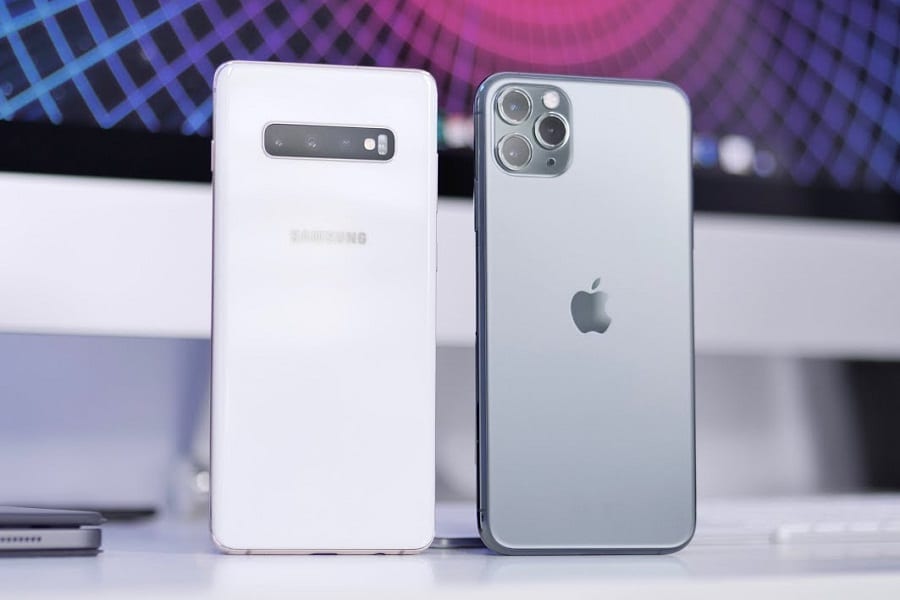“Battery life!” you best friend shouts.
“User interface1” you reply. And the war between Android versus iOS continues to wage.
You can even see a ton of people on social media constantly bickering between both operating systems and phone designs.
What I care about is the camera.
As someone who has used both Android and iPhones, I’m here with a technical and unbiased look at the difference between Android and iPhone photography.
The ultimate Android vs iPhone photography showdown is about to commence.
We’re going to go over everything from camera specs to third-party apps, manual controls, settings adjustments, software and everything in between.
Contents
Comparing the Best Against the Best
Since iPhones are the only phones running iOS, and you have hundreds of phone manufacturer’s running Android, it wouldn’t be fair to put Apple up against Alcatel or HTC (if you’ve never used one of their phones, consider yourself spared).
Continually performing alongside Apple’s camera specs and overall quality, Samsung would be the Android equivalent of the iPhone.
For this, we’re going to compare the two biggest phones on the market right now, and those are the iPhone 11 Pro Max, and the Samsung Galaxy Note10+. Let’s get into it.
Camera Quality
First up is camera quality, which is a broad way of combining megapixels, resolutions and video settings all into one.
We’ll also look at the physical hardware on the lenses to see which one is the most scratch-resistant.
Since most smartphones these days come with an optical zoom, the cameras will slightly protrude from the physical body of the phone, making lenses one of the most important aspects.
Megapixels
Megapixels are how one million pixels, contained within a square, are measured to manufacturers and the public.
Sensors in smartphone cameras allow for megapixels to be registered by the optics of your lens, which then transmit to the photos you can see on your screen.
In short, the more megapixels, the better.
If we’re just comparing the iPhone 11 Pro Max to the Samsung Galaxy Note10+, they both have the exact same amount of megapixels on their cameras: 12 MP.
12 megapixels is a pretty healthy amount that still hasn’t been pushed to its limits yet, which is why it’s been the megapixel count for many phone generations of the last five years.
They’re still trying to find ways to push it further.
I would say that as far as the MP rating is concerned—which is not the only tracker of a good camera—Apple and Android come to a tie finish.
This is simply how the internal lens of the camera is manufactured and what it can do, and they seem to be on pace with one another for the foreseeable future as well.
Lens Construction
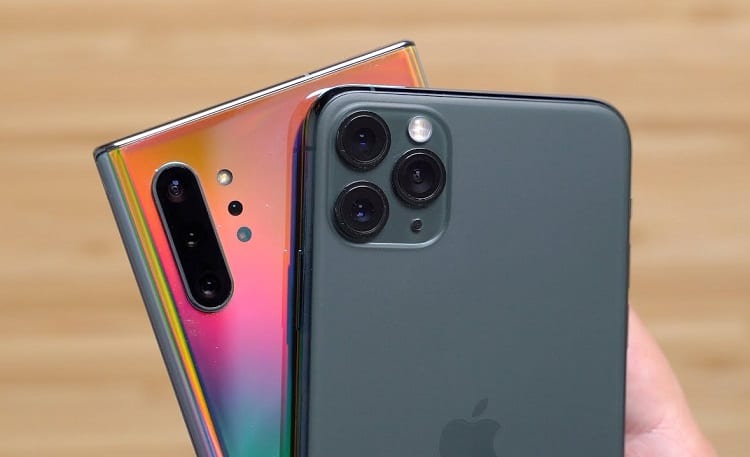
Now that we have megapixels out of the way, let’s talk about the physical build of the lenses.
Not what they can do, but strictly how durable and reliable they are.
Since the introduction of optical zoom on new-gen smartphones, which makes the camera slightly protrude from the smartphone body, developers have realized one fatal flaw: the camera is way easier to scratch now.
With that in mind, they went to higher quality lenses that can resist scratches.
We’re all prone to leaving our phone on the counter or coffee table, and previously that could have really messed up our cameras.
Now, iPhones and Android phones are made with sapphire crystal lenses.
These lenses use the same material that Rolex watches use for their dial windows, so basically, the lens is equivalent to a $20,000 executive watch in terms of durability.
But with the iPhone 11 Pro Max, Apple did something different.
They have a proprietary lens construction which is simply referred to as a six-element lens.
As far as I’ve seen, read, and used this phone myself, the lens seems like it’s perfectly durable just like sapphire crystal.
It just gives Apple this competitive edge, but both are solid options that anyone could be happy with.
For some context, they used sapphire crystal lenses in a lot of the iPhone 7, 8, and X models, so you know they’re good.
Still Image Resolution
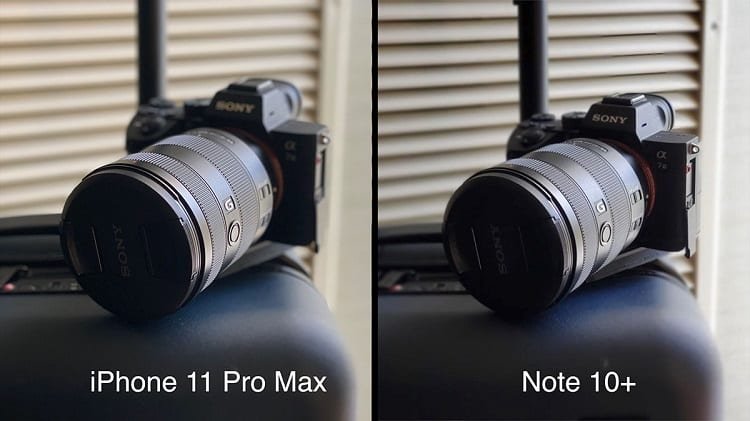
Still images command more focus from the camera, and as a result, they end up being larger than what your video recording capabilities will be.
Still images on the iPhone and Note10+ are the same, so it’s a total toss-up.
That resolution is like 4K, but boosted: it’s 4096 x 2160 pixels when you use the ultra wide lens, which both phones come with.
Curiously enough, the iPhone’s max lens FOV is 120°, but the Note10+ has a maximum angle of 123°, yet still keeps the same maximum size. I assume that it’s to have some room for error.
Front-Facing Camera Resolution
This is also where we see an improvement for the iPhone 11 Pro Max over the Samsung Galaxy Note10+.
While selfies weren’t popularized on iPhones per se, people were really getting into them when iPhones were at their peak and Androids weren’t really competing.
The user-facing camera on the Note10+ is only 10 MP, which is still good, but not as good as the 12 MP for the iPhone 11 Pro Max.
While the Note10+ has its own set of benefits, they also don’t have the power of Portrait Mode, which you may have remembered in some iPhone 11 ads a little while back.
Unless you’re using a selfie stick and you have the phone switched around, you’re going to get superior selfies on an iPhone.
Video Resolution
The resolution here is stunning 4K across the board. Samsung, Apple: they both make tantalizing displays that look gorgeous.
The reason that 4K video is such a must-have feature if you’re a photographer is because you will encounter certain scenes that just need to be filmed, or you might take on paid work and have specific clients that also want videos taken.
Either way, it’s an important feature to have.
One thing that Samsung has going for it over the iPhone is that they included a slo-mo effect to your videos, which take 960 frames per second.
That means 0.4 seconds of footage will actually run for 12 seconds, so you can make awesome slow-mo videos.
Unless you’re The Slow Mo Guys, this isn’t really going to be your most-used feature. It’s nice to mess around with though.
Optical Lenses
Optical lenses are the future when it comes to smartphones, and it’s impossible to tell me otherwise.
Optical lenses offer actual zoom (not digital zoom, which is generally terrible), and a crystal clear photo that just looks crisp and refreshing.
Thankfully, you get an optical camera on both the iPhone 11 Pro Max and the Note10+, because it’s becoming the standard.
It’s what people want to see, and it’s what my fellow photographers need to use.
I truly think that in the next few years, we’ll be able to see 3x optical zooms, and that iPhone photography will finally get some more recognition.
They tie when it comes to the optics.
Software Camera Solutions
If you have a fantastic camera and no way to access all of its benefits, then it’s completely wasted.
Software is next up, because as you use your iPhones or Android phones, you’re going to be limited by the stock software if it isn’t granting access to every feature.
Overlays and Filters
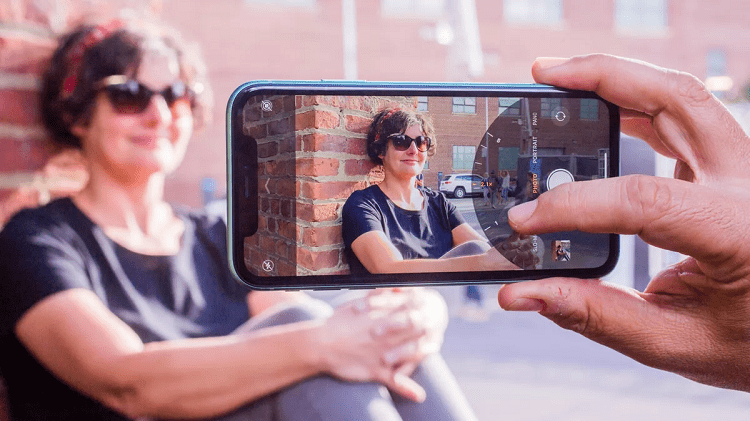
I’m going to have to give this round to the iPhone.
While Samsung offers a good amount of filters, most of them aren’t really usable for anything outside of goofing around.
They have some very polarizing filters that make a picture look cool and all, but it strips away a lot of the artistic vision because you end up focusing on the funky colors.
iPhones come with a good blend of filters that aren’t too harsh.
They actually add decent color balance and contrast to certain photos, so the filter pack is just better in general.
However, I will say that third-party apps definitely have a better grip on good filters, for both the Samsung and iPhone.
We’ll get more into third-party camera apps in a second.
Third-Party Camera Apps
This category is a bit unfair to both teams, because this depends on the market of developers in each store, and if the apps that they design are cross-platform to iOS and Android devices alike.
The stock camera app that you get with any phone is usually decent enough to get the job done, but it’s designed for the everyday user, for the millions of phone users who just want to take some decent-looking photos of their meals, or their family on vacation.
Third-party apps unlock all of the potential that your camera has to offer.
I’ve found that iOS users have fewer apps to choose from, but with a higher quality and more features.
That being said, they can also cost upwards of $23.99 (yes, for an app) with in-app purchases to enhance the base model.
Android comes with more apps, but some low-hanging fruit, so it’s a little harder to sift through all of them.
They also have paid-for third-party camera apps, but they don’t charge as much as the App Store developers do.
Manual vs. Automatic Controls
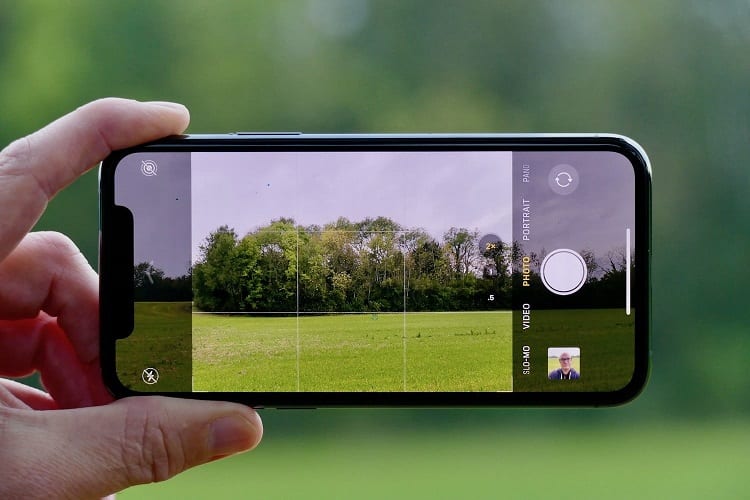
The whole reason I went off on that tangent about third-party camera apps is because of the control they give you, namely by putting your camera into manual mode.
Manual mode gives you the option to change exposure in a fine-tuned way (whereas stock camera apps are very rigid with what they allow you to do), they offer better ISO setting changes, HDR command, focus, and night vision modes.
Number of Cameras
Last but not least, now that we know the hardware of the cameras and the software used to access them, let’s talk about the number of cameras.
It feels like we’re just one smartphone generation away from unveiling a spider-eye phone with tons of cameras on the back, so let’s clear the air about why they’re important and what the differences are.
Quad-Cam
Samsung may take the cake here, because they’re the only ones offering a quad-cam for better panoramic photos and wide angles.
They feature an additional 3° of FOV (total of 123°) more than the iPhone, as well as features like tracking AF, 10x digital zoom, HDR10+ recordings, and dual OIS.
Multiple Cameras
The iPhone 11 Pro Max has three camera lenses, which include the wide, ultrawide, and telephoto lenses.
These all operate at 12 MP, which is a bump up from Samsung’s resolution per camera.
However, some of the capabilities here don’t match up to the Note10+.
Android vs iPhone for Multiple Uses
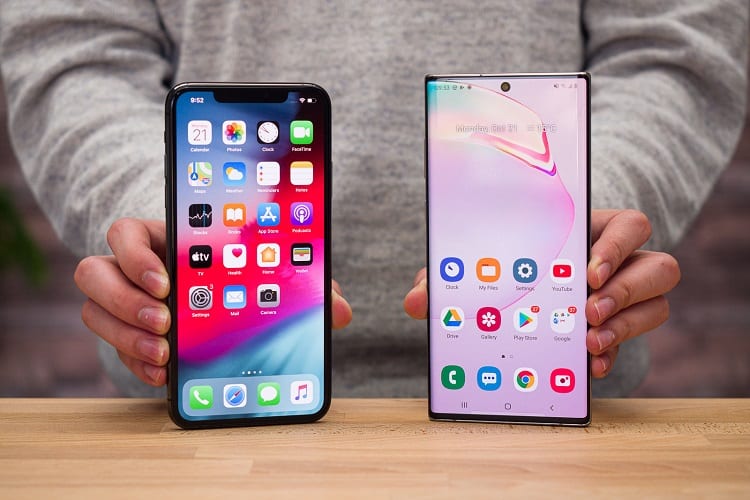
Android vs iPhone: Professional Use
I signify professional use as when a photographer wants to be taken seriously, and charge for their services.
You want to provide quality photos that clients absolutely love and want to purchase the rights to, and since none of us are made of money and can drop $5K+ on a DSLR camera to achieve this, we turn to our smartphones.
iPhones offer some of the best filters, as we mentioned before, and plenty of their third-party apps allow you to lock filters on your camera.
This means that by default, you’ll shoot photos with this filter attached.
If you have a specific style or you’re trying to capture certain moods, this can be a big bonus because your photos will be ready for client review faster.
Android also have a pretty good case to make here.
They offer the same MP rating on their cameras as Apple does, but they lack some of the features that are integral to taking professional photos.
However, since there are more Android users than Apple users, chances are that for professional use, you’ll be better connected on an Android and be able to collaborate more effectively.
Android vs iPhone: Business Use
You’re a photographer who’s running a business.
How is this different from professional use?
Because you want the camera to be fantastic, but you also want the phone itself to be functional so you can manage your photography business on-the-go.
This one has to be a tiebreaker, because comparing apples and oranges across over 40 unique markers would take ages just to come to the same result.
In terms of being able to connect with people, and manage payments for invoicing, storing and sending photos, and having access to third-party apps that make running a business easier, they both come in pretty strong.
The professional use column appeals more to freelancers, while business owners who are trying to sell stock photos, manage licensing and just run things for their photography business would constitute as business use.
Android vs iPhone: Editing Photos
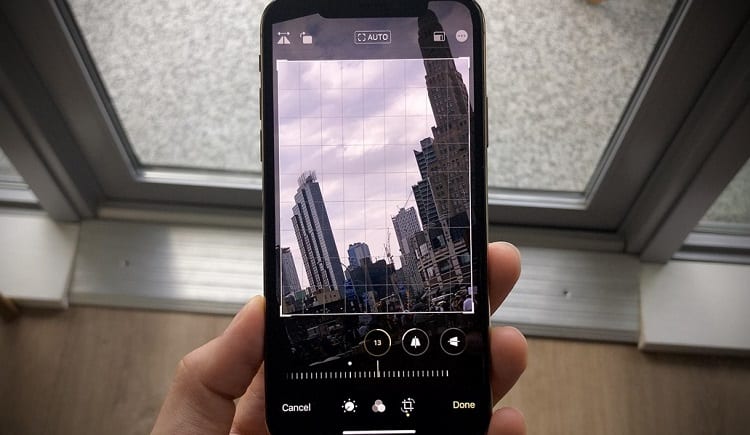
Editing photos isn’t always an easy task.
There are more apps and pieces of software available than ever before, and plenty of online education tools to learn how to use them, but the developers that control the app market (so to speak) kind of dictate which phone is better based on the apps that they provide.
That’s why I want to break this section up and just focus on the stock apps for each phone so we’re judging them accordingly.
The stock editing methods on the iPhone work well for cropping, as well as multiple lighting effects.
This can either be brilliance, sharpness, color balancing, light balancing, or filtering to add an effect over the entire photograph.
You’re also able to straighten out photos that were taken at a slight angle without reducing the resolution all too much.
With Android, you have the option to crop, highlight, and fix red-eye, but it starts feeling limited after there.
There are a good amount of filters available from Android, but based on a lot of professional smartphone photography needs, it doesn’t do everything that you need it to.
Some of the filters won’t be usable for serious projects. The highlighting tool is good, but the pen tool is questionable at best.
For in-phone editing using the stock apps that come with your phone, the iPhone definitely has an advantage in the long haul.
You can do a decent amount with both phone operating systems, but if you’re trying to make a fantastic impression on a client or a mentor, iPhones take the cake on editing.
It’s an Ongoing War
While Apple is ahead of the curve when it comes to cameras, Android splits their focus into other phone features.
Some brands, like Samsung, will focus on higher quality cameras (since Galaxy models are the iPhone equivalent in the Android world), but not all brands do.
Because there’s a lot of brands working with the Android operating system, we’ve yet to see the best of the best that Android has to offer.
Based on the last ten years and the way that Apple funnels their development, it’s safe to assume that iPhones will still be on top for some time to come.

